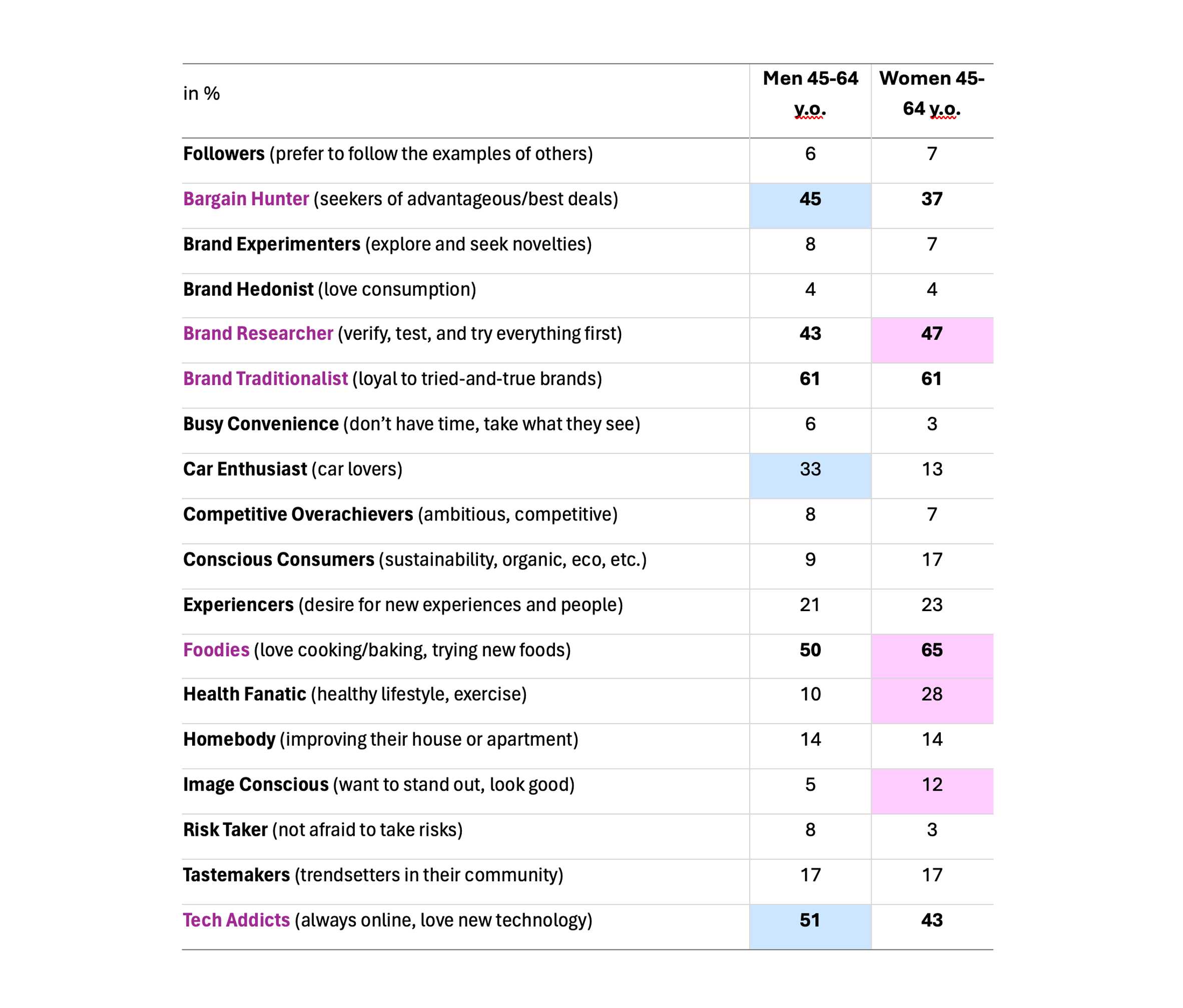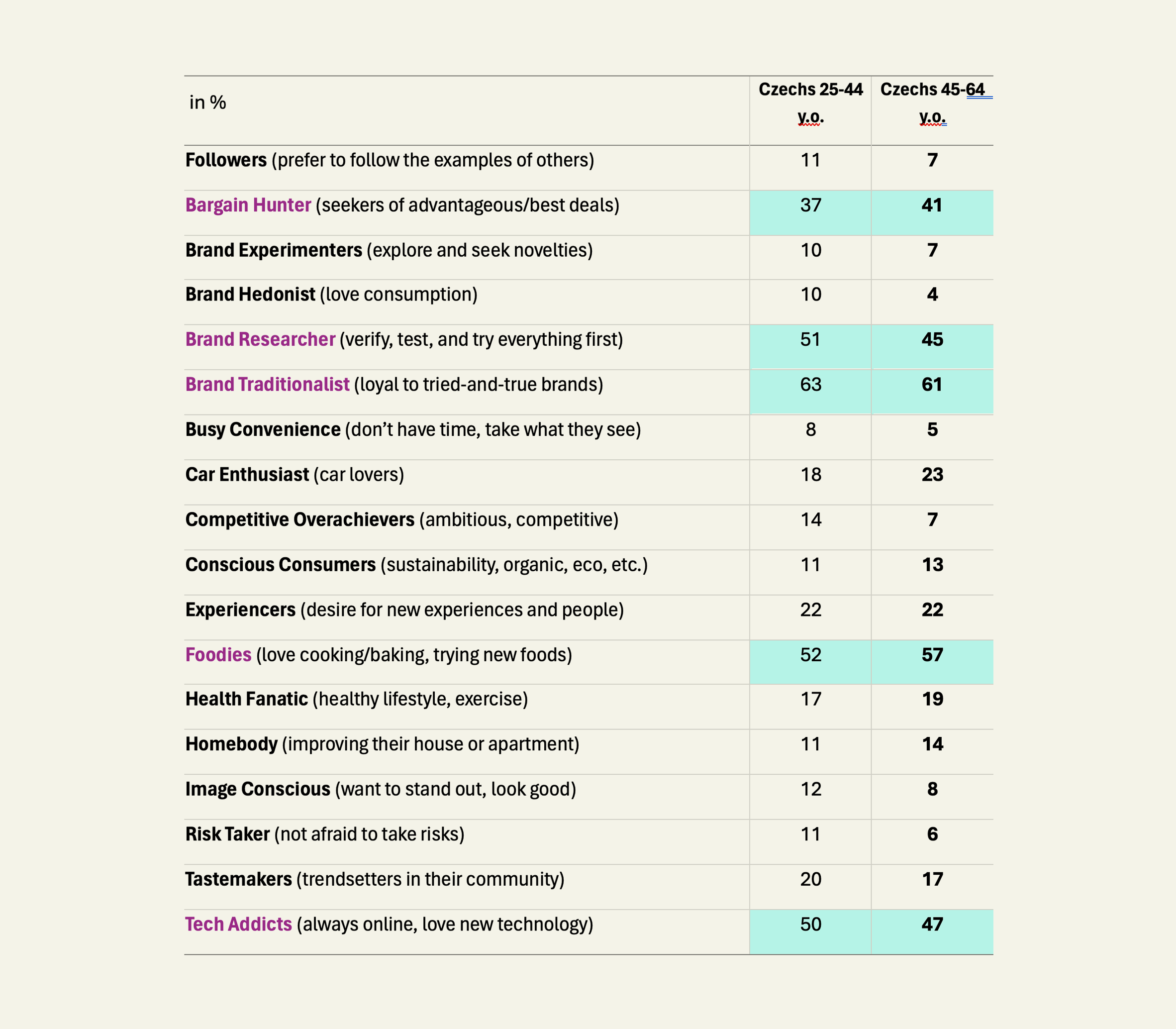Male vs. Female attitudes to brands and consumption
And how does it look in our age group of Czechs aged 45-64 when comparing men and women? Here it gets more interesting. Men are bigger bargain hunters, so watch out for them. At least once a month, 44% of men use price comparison tools, compared to 36% of women. One possible explanation is that women, amidst the daily hustle and household responsibilities, sometimes have to grab what’s available rather than pondering where it might be cheaper.
On the other hand, women are slightly more distrustful of products. This is caused also by their greater emphasis on a healthier lifestyle. When it comes to prioritizing a healthy lifestyle (“Health Fanatic” – yes, we know, those global names...), the gender difference is significant. Among women aged 45-64, 28% fall into this category (archetype), compared to just 10% of men in the same age group. A similarly large difference can only be found in enthusiasm for cars, where it is men who lead, with 33% compared to 13% for women.
Archetypes of Czech women and men aged 45-64 as consumers

Source: mPanel, výzkumný projekt GroupM
When it comes to the “Car Enthusiast” archetype, we don’t have particularly good news for car manufacturers. In the younger age group of 25-45 years, it’s still mainly men who fall into this category, but their share is 6 percentage points lower (27%) compared to their older peers, and among men aged 15-24, it’s only 9%.
Conversely, with the “Health Fanatic” archetype (focus on a healthy lifestyle, exercise), the situation is the exact opposite for women. Here, 28% of women aged 45-64 fall into this category, but only 20% of those aged 25-44, and among the youngest (15-24 years), it’s just 17%.
It logically follows that women will enter retirement in good health, while men will drive into it in their cars.
Women also score higher in the “Foodies” archetype (love cooking/baking, trying new foods): 65% versus 50% for men. However, we can’t shake the feeling that, aside from a genuine passion for food, there’s also a desire to maintain peace at home and avoid complaints about having chicken “on paprika” on the menu yet again.
Let’s not create a false impression of women obsessively monitoring their diet and lifestyle while men bravely face aging regardless of health issues. That would be far from the truth. Men and women have nothing to reproach each other for in this regard. For example, in terms of frequency of doctor visits, both are quite similar. Similarly, Czech men and women aged 45-64 both claim they go for preventive check-ups at roughly the same rates (80% for men, 82% for women).
Takže šťastné a veselé, a hlavně to zdravíčko!

